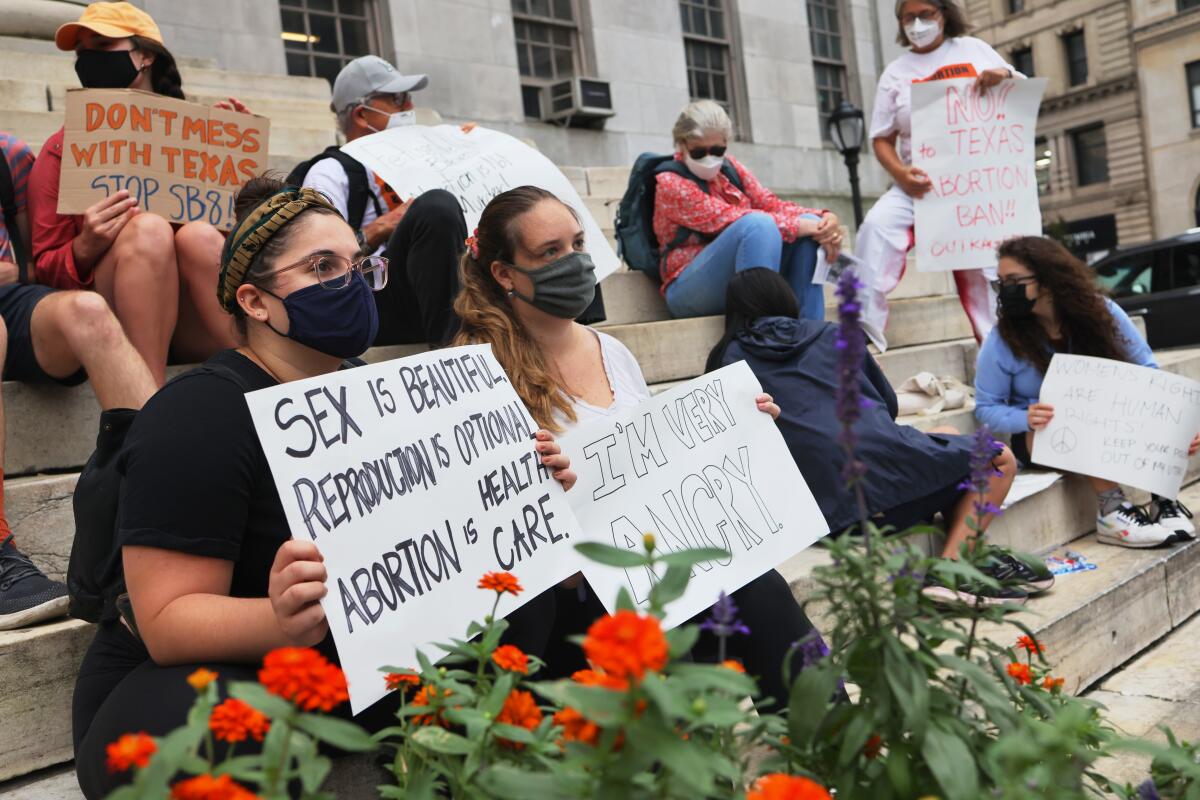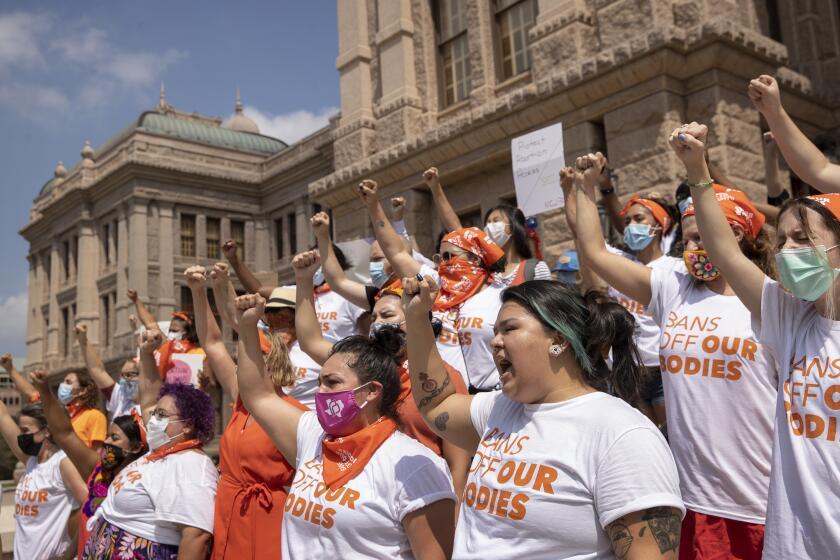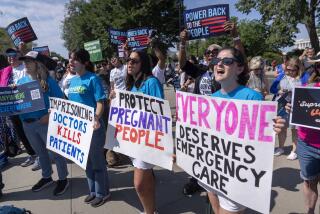Column: Can the Supreme Court be moved by abortion stories told by real women? We’ll see

- Share via
In November 2017, a third-year Texas law student named Brittany Fowler, who was in a monogamous relationship and on oral contraceptives, discovered she was pregnant.
She later learned that an antibiotic she had been prescribed for an unrelated infection had caused her oral contraception to fail.
“My doctor,” she wrote in a friend-of-the-court brief filed with the U.S. Supreme Court this month, “didn’t warn me that the antibiotic might interfere with my birth control, and it didn’t occur to me that it might be a consequence.”
Choosing to end the pregnancy was not difficult; her projected due date was the same day she was scheduled to take her bar exam. She had already committed to a clerkship and a cross-country move after graduation.
Her abortion, she wrote, “was the right choice for me.”
Shelby Vaughn had just turned 18 and was finishing a military training cycle at Ft. Sam Houston in Texas when she discovered she was pregnant.
“When I informed my drill sergeant I was pregnant and wanted an abortion, he ignored my request and said things like I needed to take responsibility for my actions and accept I’d be a mother soon.”
She ended the pregnancy anyway, and when she returned to training, Vaughn said, she was treated poorly by superiors and peers alike. “I know what it’s like to have your choice and constitutional rights violated by the very institution that is sworn to defend and uphold the U.S. Constitution,” she wrote.
These stories are two of the 26 contained in the court brief filed by Advocates for Youth and We Testify, two reproductive rights groups who want to make sure that people who have had abortions are heard loudly and clearly by the Supreme Court, whose conservative majority seems wildly out of touch with mainstream American sentiment about the importance of access to legal abortion.
In December, the court will hear a case out of Mississippi that challenges the state’s ban on almost all abortions after 15 weeks.
Mississippi, with one remaining abortion clinic, is asking the court not just to uphold its law but also to overturn Roe vs. Wade, the 1973 landmark decision legalizing abortion, and Casey vs. Planned Parenthood, the 1992 Supreme Court decision that upheld Roe but allowed states to impose certain restrictions as long as they do not cause an “undue burden” on women seeking abortions.
The court’s conservative majority recently signaled its hostility to abortion rights when it shamefully refused to block enforcement of a plainly unconstitutional Texas law that prohibits abortions after about the sixth week of pregnancy.
Many abortion rights activists believe that Roe is doomed.
Which is why, said We Testify founder Renee Bracey Sherman, it is so important for the justices to hear from women themselves. She said she hopes the justices will take the time to read through the abortion stories and the names of the 6,641 people — most of whom have had abortions — who have signed on to the brief.
Consider this an elegy for Roe vs. Wade, an imperiled law that has enabled millions of American women to control their bodies and their fates.
“We want those justices to read every single one of our names and to remember that it is ‘we the people’ who they are supposed to protect,” said Bracey Sherman, 35, who first shared her abortion story publicly 10 years ago. “My hope is they read our names and see someone they love, went to school with, care about and remember who they are impacting.”
I am not so sure the justices who oppose abortions care much about the women who need and want them.
This lack of concern for women is reflected in a couple of other friend-of-the-court briefs in the Mississippi case.
In one, 240 professional women who describe themselves as “pro-life and feminist” reject the argument advanced in Casey by then-Justice Sandra Day O’Connor that the “ability of women to participate equally in the economic and social life of the Nation has been facilitated by their ability to control their reproductive lives.” They argue that there is no good evidence that forcing women to bear children harms them economically.
A second group of 375 women, who say they were injured by late-term abortions, argue that the proliferation of “safe haven” laws, which allow women to abandon newborns in such places as hospitals and fire stations without fear of prosecution, means there is no excuse to abort an unwanted pregnancy. Such laws, they write, “give women total freedom from burdens of unwanted children.”
This brief also claims that because embryos can be frozen and later implanted in wombs, the viability standard outlined in Roe and Casey is meaningless. Currently, it is generally accepted that a fetus is viable, or able to survive outside the womb, at about 24 weeks’ gestation.
“In vitro fertilization shows viability can be documented at six days after conception,” the brief argues. “Inflicting unnecessary pain on an ‘infant life’ in the womb in an elective abortion is a crime against humanity.”
This is such a tortured definition of viability — and such a disturbing dismissal of the role a living, breathing human woman plays in a pregnancy — that I am surprised anyone could write it with a straight face.
Galvanized by the new Texas law, and the Supreme Court’s inexcusable inaction on it, the House on Friday passed the Women’s Health Protection Act, aimed at preserving access to abortion regardless of what the court and Republican-dominated state legislatures do. The bill is expected to die in the Senate, where it isn’t likely to garner the 10 Republican votes needed to break the filibuster.
When it comes to women’s rights, sadly, these are dark times in America.
More to Read
A cure for the common opinion
Get thought-provoking perspectives with our weekly newsletter.
You may occasionally receive promotional content from the Los Angeles Times.













